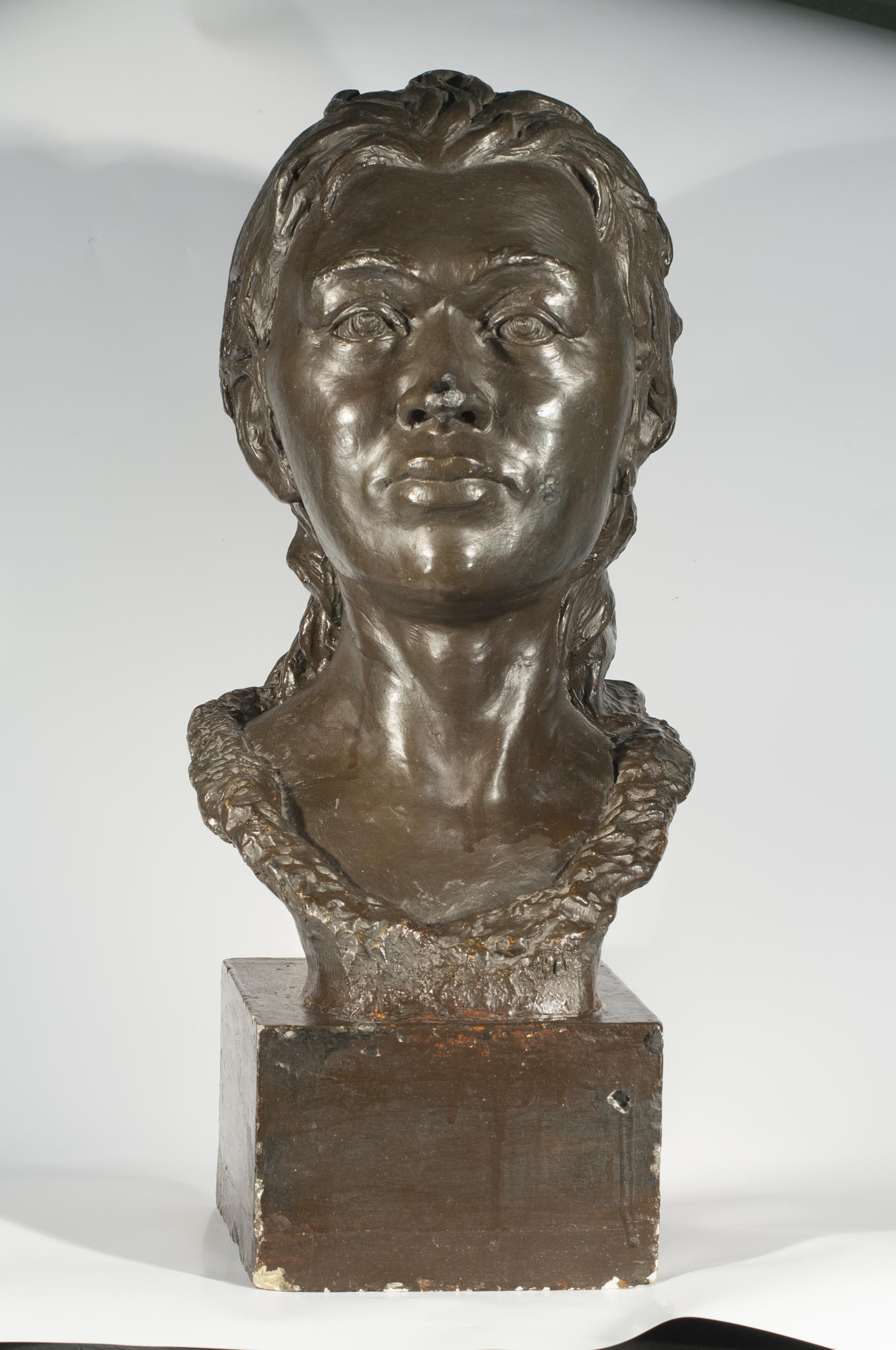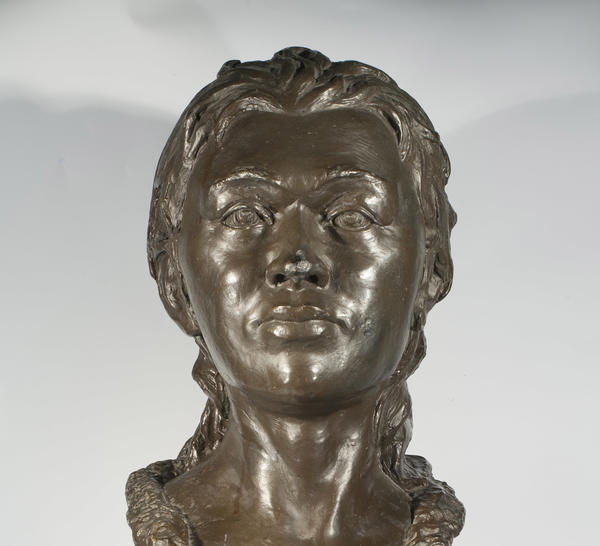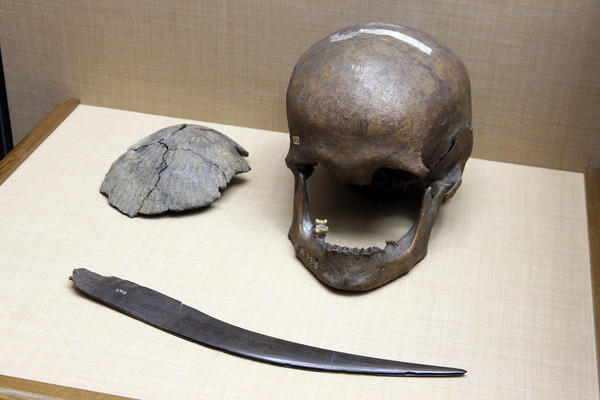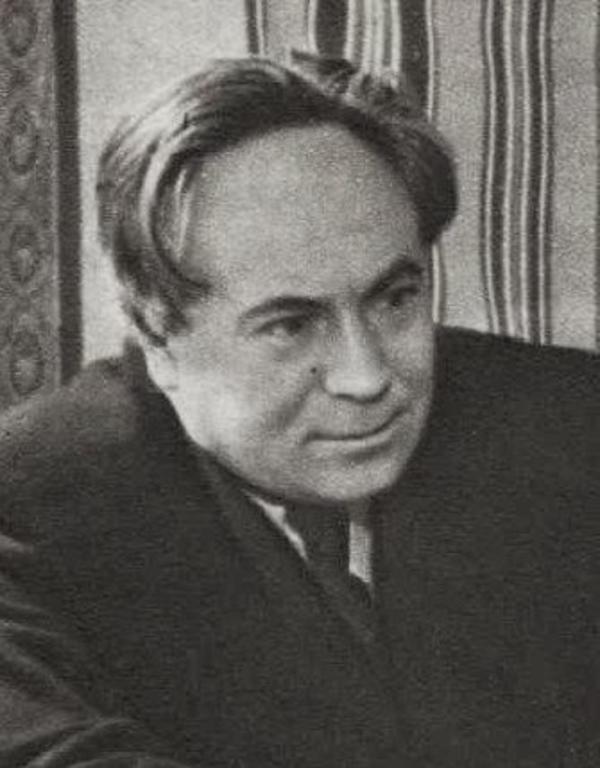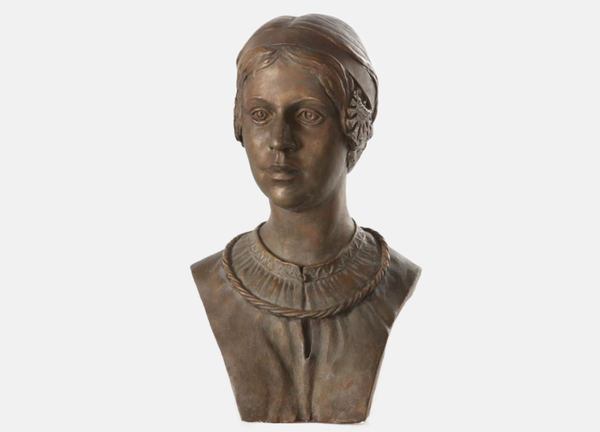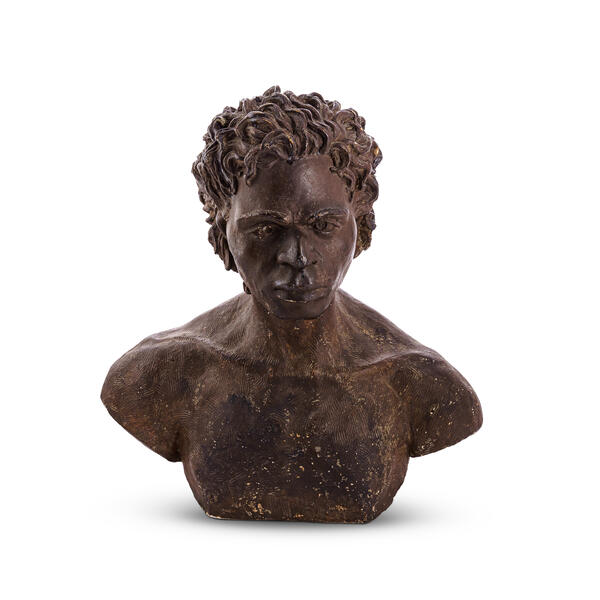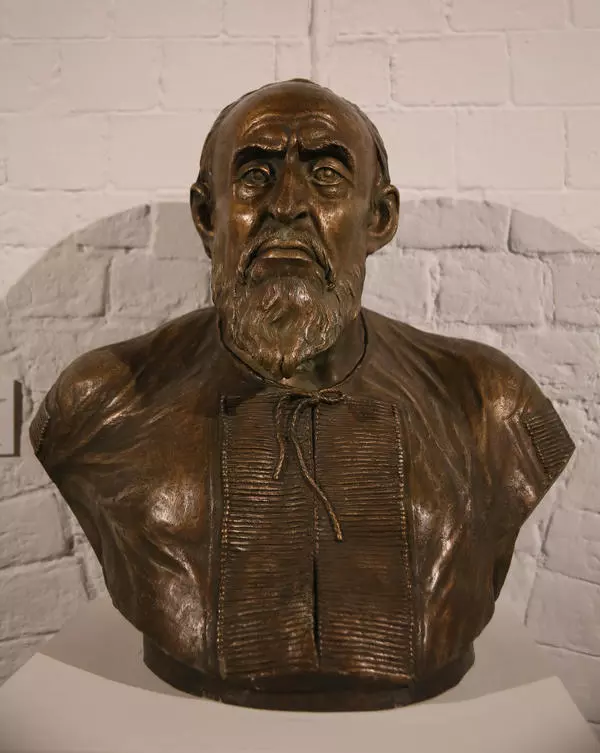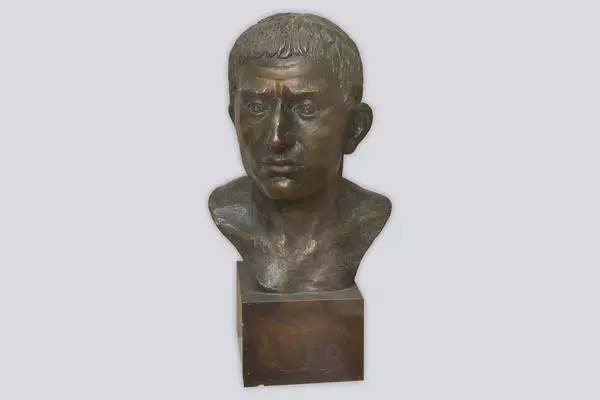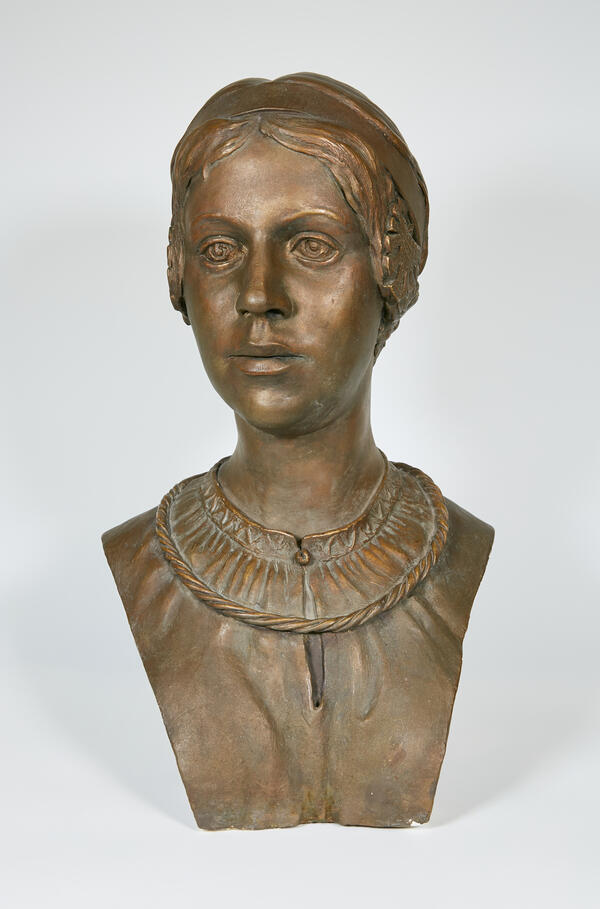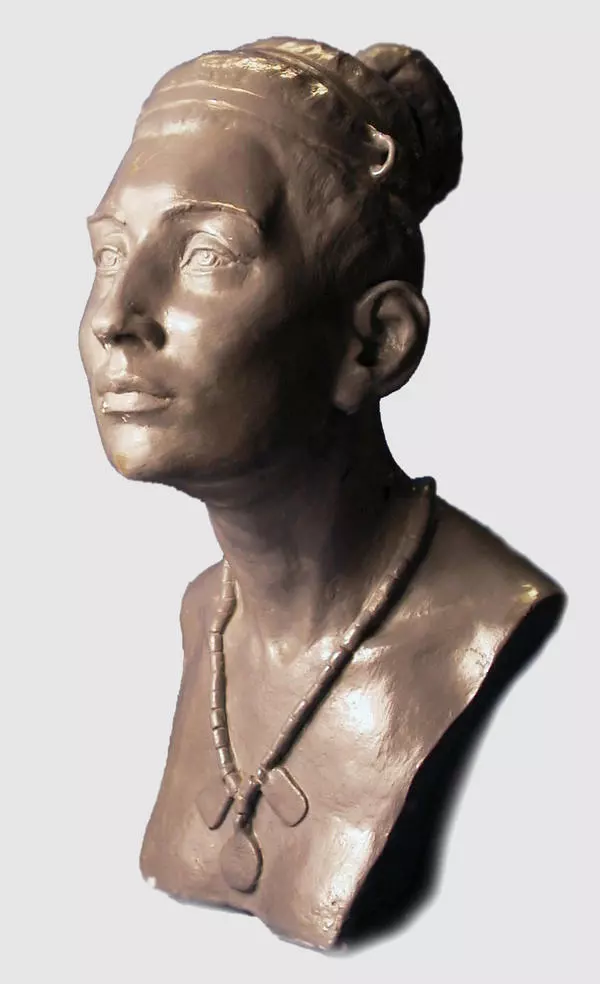The sculpted reconstruction of the face of a young woman who lived around five thousand years ago was done by anthropologist Mikhail Gerasimov in the 1950s. To do that, he used the methodology of building up the facial features from the skull.
Sculpted reconstruction of a woman’s face
Время создания
50s of the 20th century
Техника
Modelling
2
Открыть в приложении#9
Gerasimov M.M.
Sculpted reconstruction of a woman’s face
#10
#2
The photo of the Shigir Treasury exhibits shows a human skull, an insert type of knife and the bottom of a vessel of the Eneolithic age.
The human skull was discovered at the end of the 19th century by gold miners at the Second Kuryinsky gold mine of the Shigir peat bog site in the environs of Ekaterinburg. The young woman whose skull was found died at the age of 20-25 years. Historians believe that she belonged to the Ural minor race – an anthropological type between the Europeoid and Mongoloid races. The northern Khanty, Manci, Nenets peoples belonged to it.
#12
The age of the skull was determined only approximately and owing to another find. Not far from the place where the skull was found, archeologists discovered the remains of ancient man. The body was supine but neither the head, nor the place where it could lie was found in the grave. Historians dated the burial as the Eneolithic age, 4000-3000 B.C. These two artefacts suggested to historians that during the Eneolithic age there was a custom in the Urals region to bury the body and the head of the deceased separately. Archeologists believe that the young woman’s body remained on the shore of the Shigir paleolake, which existed in the place of the modern peat bog.
#5
Mikhail Gerasimov, the author of the work, was born in 1907 to a family of a doctor. From his childhood, he took part in archeological excavations. When he was only thirteen Mikhail Gerasimov worked at the anatomy theatre set up by the Medical Department of the Irkutsk University. He regularly visited the morgue trying to understand the correlation between the facial soft tissues and the cranial bones. At the age of eighteen, the future sculptor published his first paper on an archeological theme. Mikhail Gerasimov worked as an archeologist with the Local History Museum but he soon understood that his calling was sculpture.
Gerasimov M.M. Source: magazinу ‘Смена’ (‘Exchange’), 1950.
#13
Mikhail Gerasimov studied the relief of facial features, the bones and faces of people who had ecently died. After a while, he presented to the public his new method of facial reconstructions from the skull. It was adopted by forensic experts and anthropologists.
#14
Archeological studies of the Shigir peat bog began November 16, 1879 when for the first time in the Russian Empire historical artefacts were discovered in the peat layers. The territory where the gold mines were located belonged to Count Alexey Stenbock-Fermor. The Count donated to the museum of the Urals Society of Amateurs of Natural Sciences forty different finds. They became the foundation of the. Now it has three human skulls. The one that Mikhail Gerasimov used for his sculpted reconstruction got burned in his laboratory in Moscow in the 1960s
#15
The SRHM, E.F. Tamplon
читать дальшескрыть
00:00
00:00
1x
Sculpted reconstruction of a woman’s face
Время создания
50s of the 20th century
Техника
Modelling
2
Открыть в приложении
Поделиться
